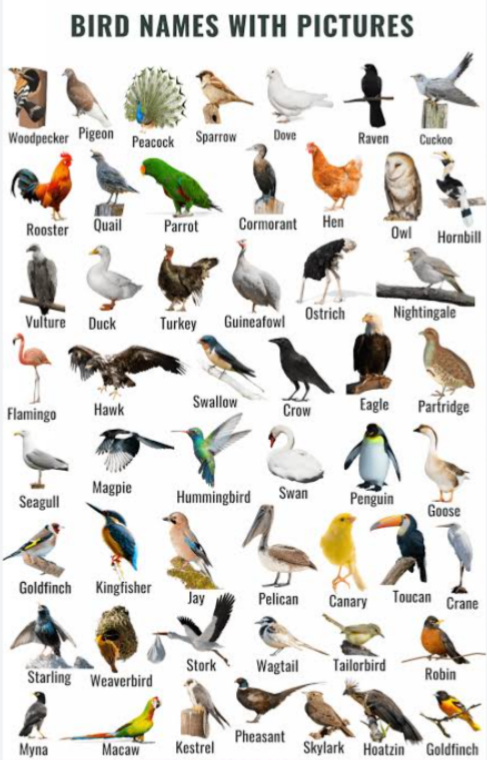
The avian (Birds) belong to the animalian kingdom with varying characteritics that distinguish them from other animals. They belong to the Domain: Eukaryota, class Aves, they are bipedal , oviparous (egg-laying) vertebrates. They are warm blooded animals (homeothermic ).
Ornithology is the study of birds, and it comes under branches of zoology. September 17th marks the National Pet Bird Day. This gives one of the reasons this creatures are important as pets. They are sociable, intelligent, and with the right socialization, can form wonderful bonds with their pet families.
There are over 11,000 living species of birds all over the planet. All birds can be grouped into two categories, domesticated and undomesticated birds. From this grouping, some birds are birds raised for food and their products, pet birds, as a game bird and wild birds. Birds are solely gonochoric, meaning they have two sexes “female and male”. Some have monogamous breeding system. Other species have breeding systems that are polygynous (one male with many females) or, rarely, polyandrous (one female with many males) breeding system. They undergo sexual reproduction and produce offspring from the fertilised laid eggs. The eggs are laid in a nest and incubated by the parents.
Examples of birds include fowl, turkey, geese, parrots, owl, quel, Canaries, Finches, Parakeets, and Cockatiels etc
IMPORTANCE OF BIRDS
Birds are important sources of
1.SOURCE OF DIETARY PROTEIN AND FAT: Fowl, turkey, duck, and geese etc are good source of protein provide from their eggs, and meat. Also animal fats used for making vegetable oil can be sourced from poultry fat
2. AS PETS: Songbirds, parrots, and other species are popular as pets.
3. FERTILISERS :Guano (bird excrement) is harvested for use as a fertilizers
4. SOURCE OF FOOD: Some species of birds are important as food for human consumption. The most commonly eaten species is the domestic chicken and its eggs, geese, pheasants, turkeys, and ducks. Other birds that have been utilized for food include emus, ostriches, pigeons, grouse, quails, doves, woodcocks, songbirds, and others.
5. OTHER PRODUCTS: Other products sourced from birds are feathers, bone meal, and blood meal. Feathers are used for making pillows, mattresses etc. Bone meal, egg shell and blood meal are ingredients used for livestock feeds and skins for warm, waterproof clothing and blankets.
6. POLLINATORS: Birds are one of the agents of pollination. As they feed on the nectar in flower, grains of pollen get stocked to their feathers which they deposited on the stigma of flowers.
7. The dove is used as a symbol of peace and love, as well as the Holy Spirit in Christianity; ..8. Cranes symbolizes long life, and owls symbolises wisdom
9.They are used to control pest ( biological and IPM control measures)
10. SPORTS: Birds are used for sport activities. Roosters for example are used to fight one another especially in Asia countries.
11. SOURCE OF EMPLOYMENT : Lot of poultry farmers and pet bird farmers linger around all countries in the world. They produce poultry products for food, industrial raw materials and pets bird industry. This had provided employment for millions of people who could not get white collar jobs and retirees.
12. SOURCE OF INCOME: Poultry farmers, industries that convert poultry produce to products, pet farmers and countries all make good money from the sale of poultry produce and products and countries all over the world realise good revenue from poultry and pet birds
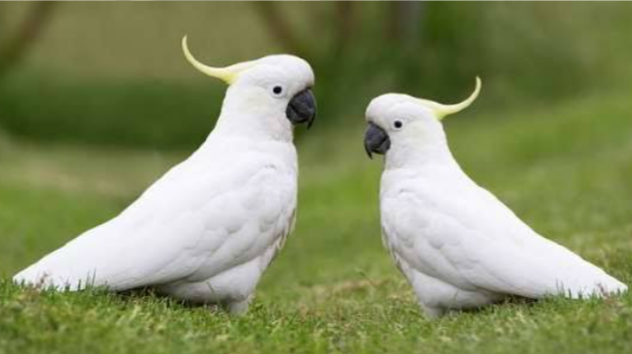
CHARACTERISTIC OF BIRDS
1. Birds are warm-blooded animals.
2. They are oviparous (egg-laying) animals.
3. They are vertebrates ( they have an inner skeleton that contains a spine, limbs, and a skull) characterized by feathers that cover the whole of their body except their fore and hind limbs
,4. Their forelimbs is modified as wings, use for flight
5. They possess a bony beak without teeth. They use their crop to grind the food they eat.
6. They lay hard-shelled eggs
7. Some of them can fly, such as owl, bats, eagle etc while some are Flightless birds included are the penguin, ostrich, kiwi, and the extinct dodo etc.
8. They range in size from the tiny hummingbirds to the huge ostrich and emu.
9. Some birds are diurnal, or active during the day. While some birds, such as the owls and nightjars, are nocturnal or crepuscular (active during twilight hours)
10. Birds are endothermic – they maintain constant body temperature by themselves, without depending on outside factors;
11. Birds are bipedal (i.e., they move on two limbs when they are on the ground);
12. The body of most bird is spindle-shaped (to make the flight more comfortable and more effective);
13. Some birds possess colorful feathers, reason for choosing them as pets.
14. Their legs are covered with scales.
15. The birds have a heart with 4 chambers – this way, the oxygen-rich and oxygen-poor blood is divided correctly, which helps with maintaining constant temperatures;
16. The birds have a complex nervous system and a well-developed brain. Many birds are known to be highly teachable and intelligent;
17. Fertilization in birds is internal. As a result of fertilization, a closed-off, waterproof egg is formed.
18. The eggs develop outside the body, usually under the care of both parents or sometimes only one.
BIRDS AS PETS
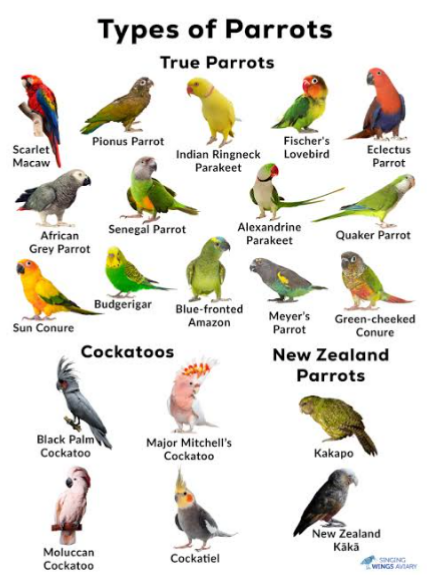
In the olden days before the modern use of postage to deliver letters, humans have been using birds to deliver written messages. For example, Homing pigeons were commonly used to carry messages before the advent of modern instant communications methods. Many birds are still used for sport. Falcons are still used for hunting, while cormorants are employed by fishermen. Fowls and pigeons are used for experimental purposes, and are often used in biology and comparative psychology research.
Colorful birds particularly tropical, birds (e.g., parrots, and mynahs) are often kept as pets although this practice has led to the illegal trafficking of some endangered species.
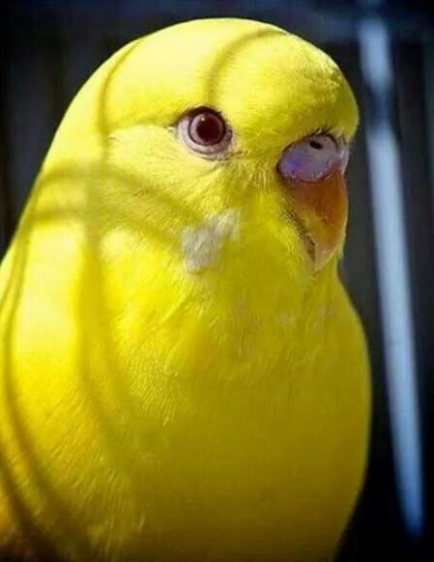
Some People are allergic to pets like cats or dogs therefore seek for alternative pet companionship such as bird.
WHAT MAKES PET BIRDS GREAT PETS
There are many reasons why birds are a good pet option. Some of which are
1. BIRDS ARE BEAUTIFUL AND ATTRACTIVE : Birds like parrots possesses and flaunt their fascinating feather which are designed and coated with different colours and patterns. This makes them attractive and appealing to the eyes, choosing them as pets.
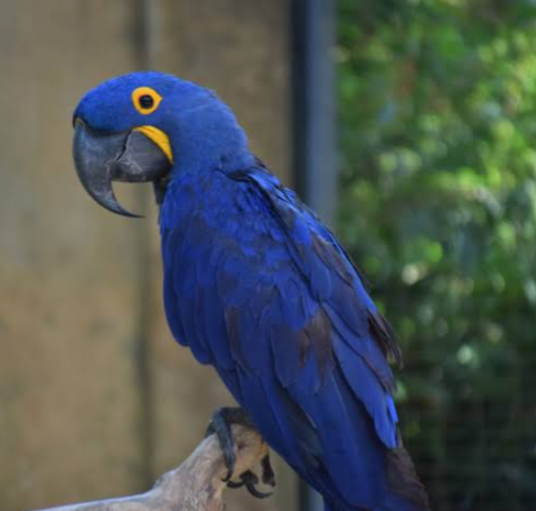
2. INTELLIGENT AND TRAINABLE
Birds are intelligent, and trainable especially the African Grey Parrot.Their high intelligence means they are easy to train and can learn lots of tricks and tasks. They can chat with human and play various games with them.
Some pet bird breeds can mimicry especially by picking up sounds and words they hear from their caretakers or people around them. Examples include some parrot species and parakeets.
Some of them have excellent problem-solving and cognitive abilities. They possess excellent memories and can easily recognise their pet parents.
3. CHEAPER MAINTENANCE AND CARE COST :
The cost of caring for birds is low compared to other pets like dogs and cats. Feed cost , and veterinary care cost are low. The older the birds , the more need for regular veterinarian checkups. However, they don’t need vaccinations or other costly veterinary care services as long as they’re healthy. They require low maintenance compared to cat or dog.
4. EASE OF ADAPTATION TO NEW ENVIRONMENT : Birds easily adapt to new environments. This can be seen in their natural wild environment as they migrate for survival. Therefore, they easily adapt when they are adopted to their new home with human.
They are easy to integrate into families with children and teach kids the responsibility of pet ownership.
5. SMALL SPACE OF LIVING : Birds like poultry, ostrich etc raised in large numbers require large space to rear. Smaller species of birds raised as pets require small space to live in, such as cages. They can live in a room with their owner or in big apartments.
6. THEY ARE LOYAL , AND LOVE BEING CUDDLED :
Pet birds build strong ties with their human “flock-mates”. They enjoy the company of their companion mates especially when time is created for them. Petting and cuddling the birds, especially the larger species, is a pleasurable experience for them
7. HIGHLY SOCIABLE : birds are highly sociable loving and affectionate creatures. With the right training, they socialise perfectly and form a close bond with their pet parents.
8. HIGH -QUALITY PET FOOD : Compared to many other types of pets, birds often require less draining of monthly budget. They require high-quality pellet diets which are inexpensive to purchase. They can also be fed with grains, fruits and vegetables.
9. FUNNY AND ENTERTAINING : Pet birds are fun creating creatures. They flunt their fascinating feathers which attract the sight of their pet parents and people close by. They are used for sporting activities.
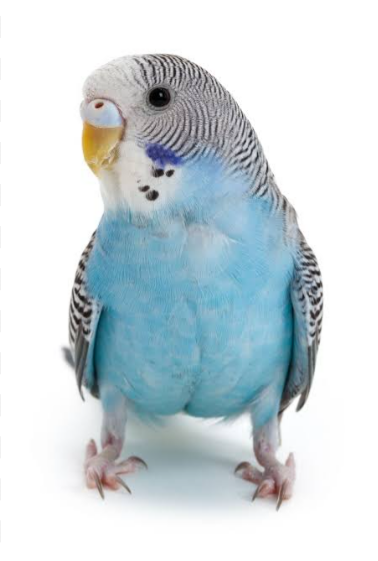
LIMITATIONS TO KEEPING BIRDS AS PETS
1. NOISINESS: Pet birds can be noisy atimes. Some produce soothing and pleasant music with their vocalizations. They produce sounds like chirp, cackle, screech, and coo etc. Other vocalizations sounds they make include: Chirping, Whistling, Chattering, Screaming, Hissing and Talking or mimicry. Therefore, any pet parents that seeks to adopt bird as a pet should careful in selecting the bird species that suit his or her preferences.
2. PET BIRDS CAN BE MESSY : Pet birds have messy eating habit. They can squander some bird food and bits of foods between their cage’s bar and the floor below. Therefore, there would be need for consistent cleaning of the cage bars and floor. Or else, Insects will create a home in the house. Alternatively, a cage skirts or a flat material can be attached to underneath the cage to collect the food scraps.
3. PET BIRDS CAN BE DESTRUCTIVE : pet birds can use their beak and claws to collect soft materials to play with and make nests. Such soft materials can be cotton stuffed in pillows, sofars, and chairs. They use their beaks and claws to scratch and destroy household furnitures. Therefore, pets parents should protect their furniture and provide toys to the pets to play with.
4. THEY CAN GET EASILY TEMPTED TO SHINY OBJECTS :
Coloured , Glimmering and flashy objects naturally attract birds’ attention, and it might urge them to attack it even if it’s part of your clothing. In the wild, birds are attracted to plants by their coloured petals. This is similar to coloured materials in homes.
Therefore, jewelry and clothing with sequins or other glistening objects should be protected and kept away from pet birds sight.
5. THEY NEED SOCIALISATION TIME AND EFFORT : To relief pets from loneliness and depression, their is need to socialise the pets. Pets become happier if they have someone they can play with.
When pet birds do not sing or move actively, that could be a sign of depression. Therefore, their is need to spend extra time in one-on-one bird handling sessions to keep them active.
CARING FOR BIRDS
1. HOUSING UNIT: Birds are housed in cages. They can be let out of their cages to exercise and play around with their pet parents in their enclosed buildings. Only tammed and trained birds should be allowed out of their cages.
Note that their cage should not be a means of constant restraint but a home where they can leave from time to time.
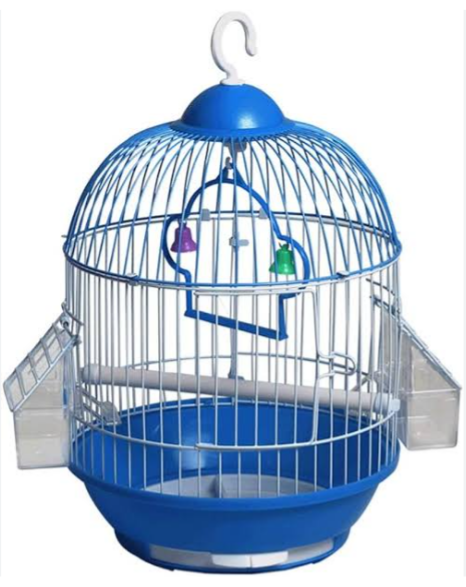
2. PET BIRD FOOD: pelletized bird food can be purchased from feed stores and feed to the birds. Also fruits and veges can be fed to them. Such fruits and vegetables include :carrot
Capsicum, peas, broccoli, beans, corn, pumpkin
kiwi, strawberry, squash, tomato, blueberry, grapes, a little bit of apple, melon and Other fruits/ vegetables to keep them healthy
Fruits and veges such as avocado, celery, stalks
chocolate, onion and garlic etc should not be fed to them.
Also, clean water should be provided in drinkers installed in their cages. Water stress and dehydration can kill birds.
3. PARASITE PREVENTION : Parasites can be ectoparasites (external parasites) or endo parasite (internal parasites). Pet birds are vulnerable to both types of parasites.
INTERNAL PARASITES
The Internal parasites that affect birds include roundworms, tapeworms, flukes and protozoa (like coccidia and cryptosporidia) parasites.
EXTERNAL PARASITES
Mites and lice are the most common external parasites in birds.
SOLUTIONS: Birds should be purchased from a reputable breeder as such birds are free from internal parasites. While external parasites like mites and lice, can be controlled by spraying the birds with pesticides( for example, mite spray)
4. NAIL TRIMMING
Bird’s nails are sharp. Therefore, there is need for trimming of the nails to prevent scratching the owner when playing with them or shoulder-perching and body scratch which may cause injury.
5. VISIT TO THE VETERINARIAN : Occationally, pet birds should visit the veterinarian for proper check up. As they grow older, regular check ups and blood tests should be done to make them leave longer. Health issues can shorten the life span of pet birds.
COMMON BEHAVIORAL ISSUES IN PET BIRDS
The following are common behavior problems in pet birds
FEATHER PLUCKING ,
CAUSES : skin infection, boredom, overstimulation, a poor diet, and even sexual frustration..
AGGRESSION :
CAUSES : Hormones, fear, stress, or past trauma, and jealousness of another family member or pet,
BITING
CAUSES : It is a normal behaviour in birds, other causes are fear, aggression, and jealousy.
TERRITORIAL BEHAVIOR
CAUSES : Hormones, mating and during nesting season.
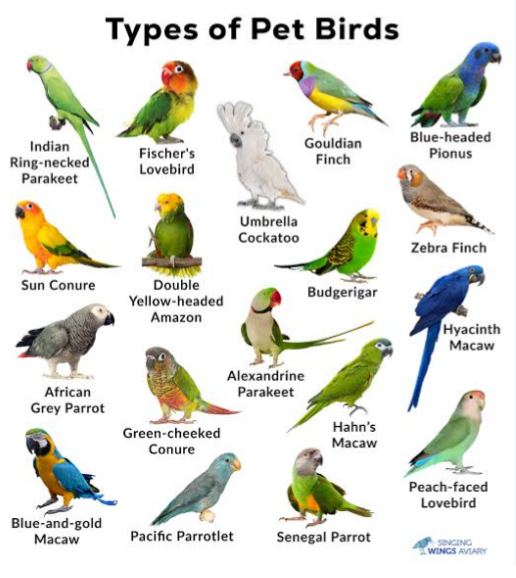
‘. ‘.
